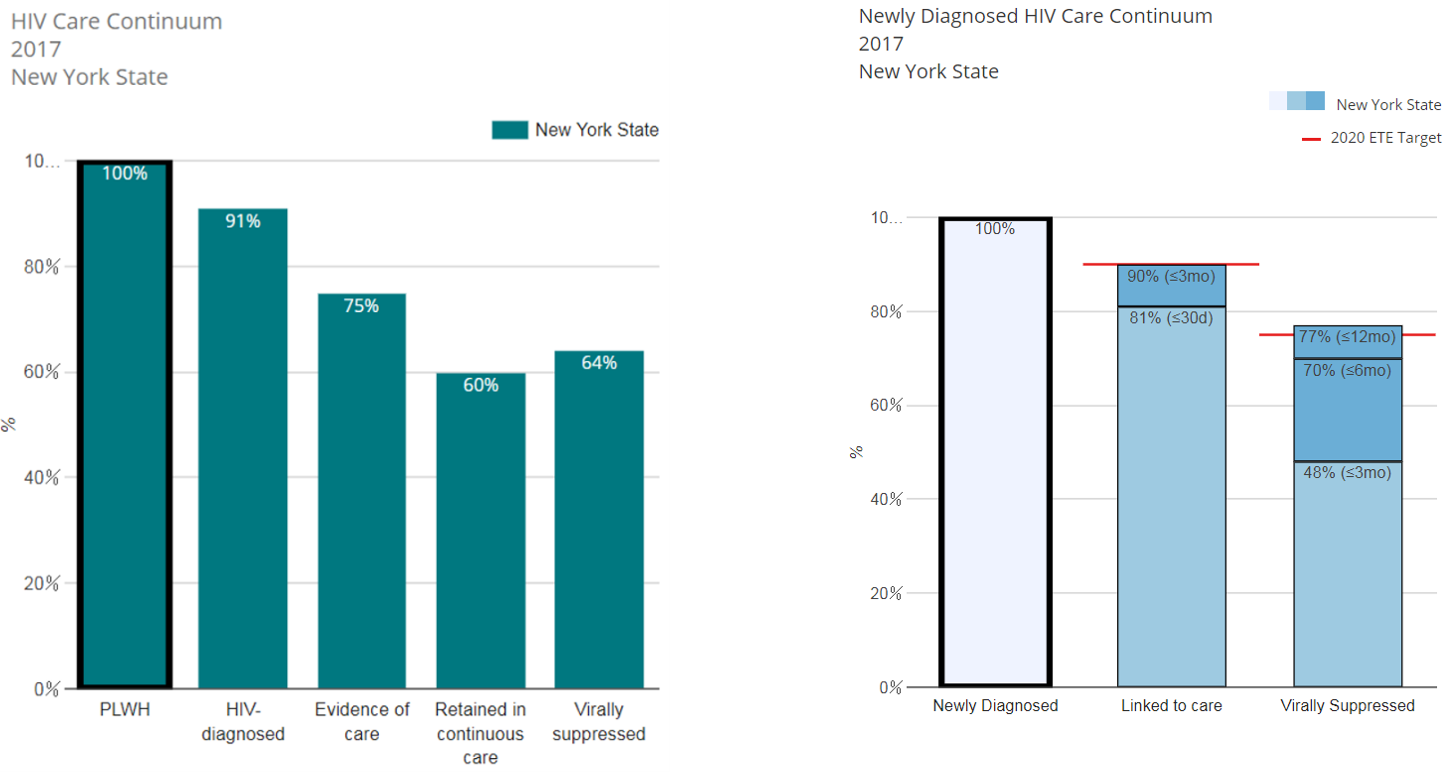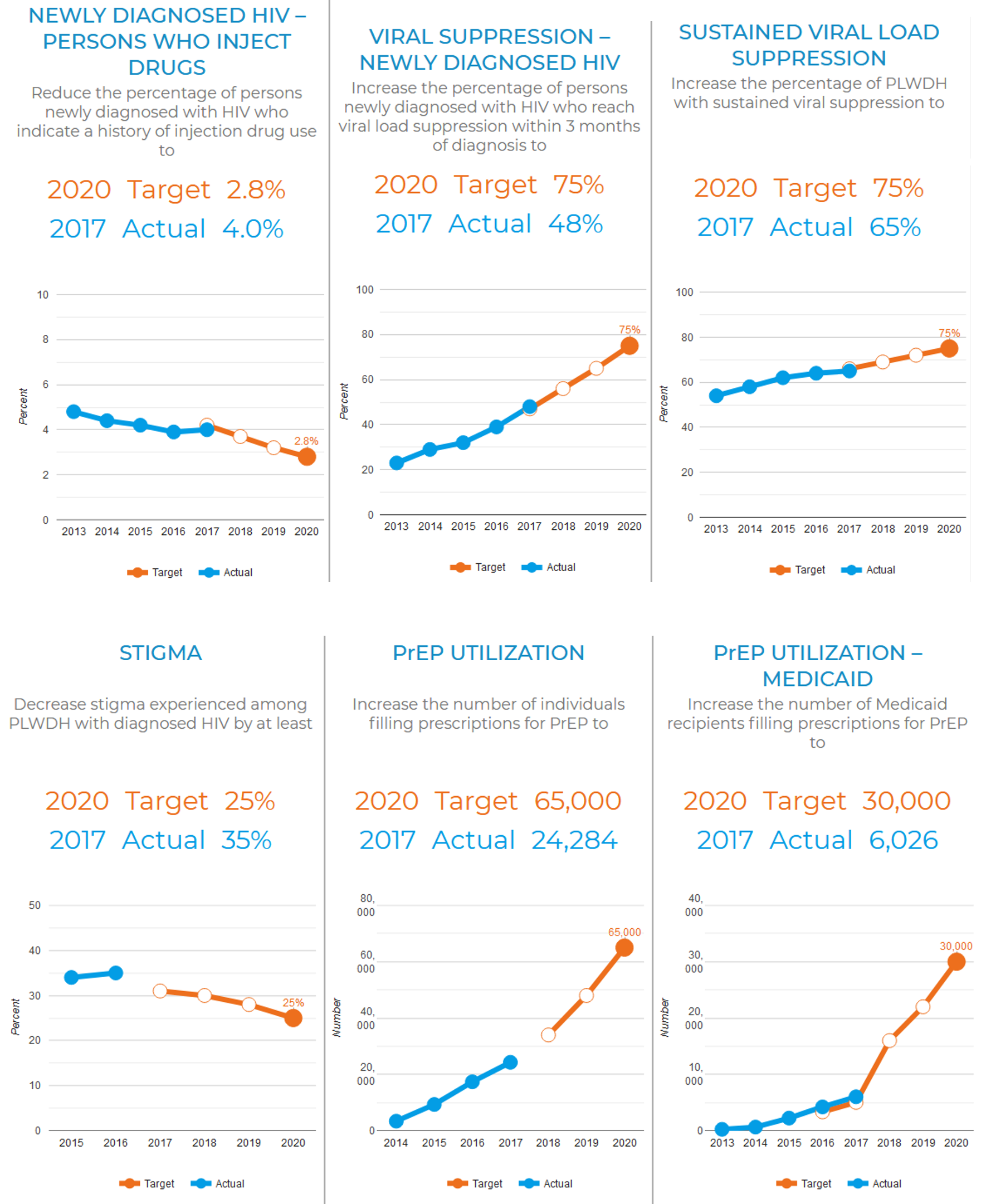New York State HIV care continua and newly updated metrics to track progress towards Ending the Epidemic
Data through 2017 are now available on the ETE Dashboard’s HIV care continua visualizations for both people living with HIV and people with newly diagnosed HIV in New York State. These interactive tools allow users to view care continua by year, geographic area, and demographic or transmission risk group across the state.

- In 2017, among the estimated 122,610 persons living with HIV in New York State, 75% had evidence of care and 64% were virally suppressed.[1]
- Of the 2,752 persons with newly diagnosed HIV in 2017, 81% were linked to care within 30 days and 70% were virally suppressed within 6 months of diagnosis.[2]
- Notable disparities persist among those with newly diagnosed HIV:
- Of 474 white newly diagnosed persons, 86% were linked to care within 30 days and 78% were virally suppressed within 6 months.
- Of 1,097 black newly diagnosed persons, 80% were linked to care within 30 days and only 63% were virally suppressed within 6 months of diagnosis.
- The newly diagnosed care continuum now presents viral suppression within 3 months of diagnosis (48% in 2017). This measure was also recently added to New York State’s list of key metrics to track progress towards ending the epidemic by the end of 2020. Red horizontal lines on the care continuum visualization indicate the 2020 ETE targets of 90% linked to care within 30 days and 75% virally suppressed within 3 months of diagnosis.
ETE Metrics
Like the HIV Care Continua among persons living with HIV and among persons with newly diagnosed HIV, the Dashboard’s ETE Metrics page is now updated with 2017 data and includes 6 additional new metrics, including viral suppression within 3 months of diagnosis, sustained viral suppression, stigma, and PrEP utilization.
Visit the ETE Metrics page to view all of the official statewide ETE Metrics that track recent trends against annual targets.

[1] Data as of October 2018, NYS HIV Surveillance System. Excludes persons with AIDS with no evidence of care for 5 years and persons with diagnosed HIV (non-AIDS) with no evidence of care for 8 years. Measures presented by different sources may be calculated differently or use different information even though their titles are similar.
[2] All newly diagnosed individuals reported here are aged 13 and over with known HIV stage.
